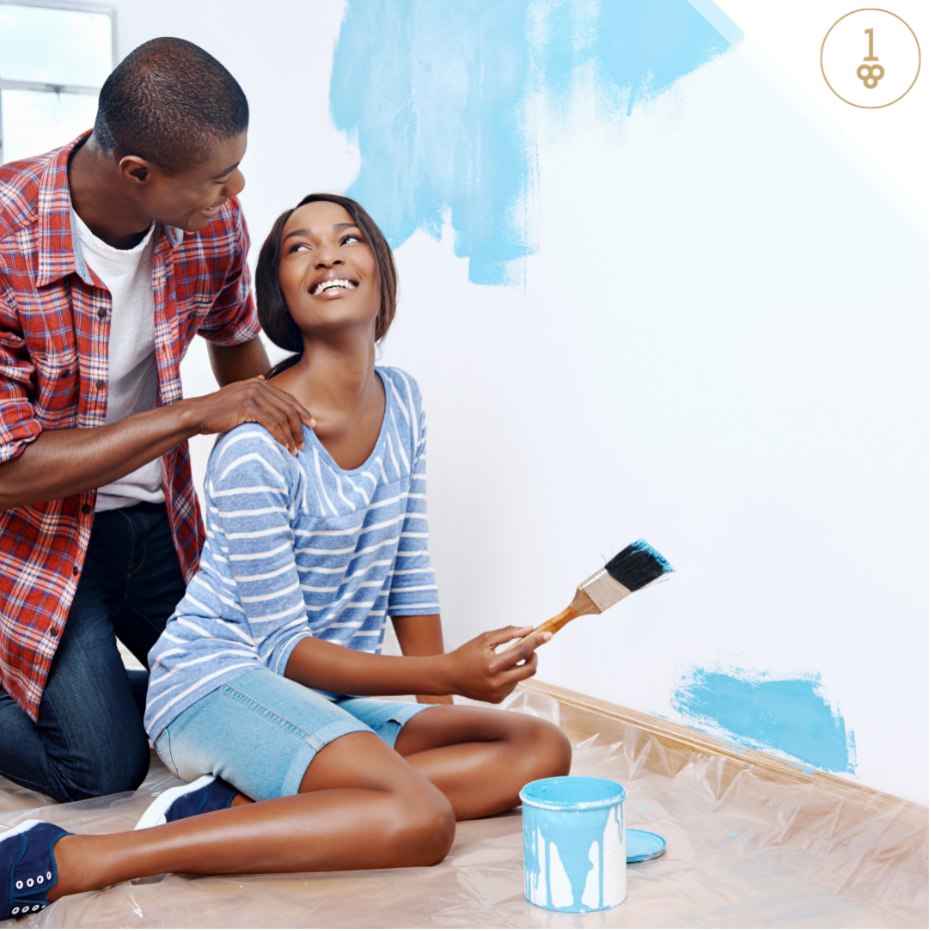Designer’s Tips: 5 Tips for Selecting a Color Scheme

Selecting colors for your home can feel like a big task.
With many color choices available, choosing the shade, or group of shades, that work best with the lighting and décor in your home can be difficult. It can be even more difficult if you’re planning to update the lighting or décor after choosing foundational colors like wall paint and wood tones.
By following a few professional design secrets, you can select a color scheme for your home that appears considered, cohesive, and visually appealing.
These are some Pro Tips for choosing a color scheme for your home.
1. 60-30-10 Rule
The 60-30-10 Rule is a decorating guideline that professionals have been following for a long time. The breakdown of the guideline for color in any room should be 60% of the dominant color, 30% of the secondary color, and 10% of the accent color.
The rule’s exception would be if you’re choosing to decorate in the bold Maximalist style. Currently Maximalism is trending but it’s not a style that has widespread popularity or appeal.
2. Selecting Color for an Open Floor Plan
An open floor plan can be challenging since you are planning the colors for multiple living spaces in one large room. The whole space doesn’t have to be the same color, but the colors should feel like they flow together. If in doubt, stay within the color shades on the paint sample card to ensure that all colors have the same undertones and use that as a guide to create a visually cohesive space.
Using trim and ceiling color as another cohesive note also helps to unify open floor plans while giving living spaces their own character. You can also add character to open floor plans by adding paint or wallpaper in coordinating colors to the back of bookcases and built-in shelving.
3. Determine the Feeling You Want the Home to Have
Do you gravitate toward warm neutrals? Then you’ll likely be considering shades of white, cream, and griege (a warm grey). If you gravitate toward cool neutrals, you’ll be gravitating toward white, cool gray, and blue shades for your color palate. If you love bold, saturated colors, stay within a jewel tone or bright coastal color palate to ensure it works together. Finally, plan to incorporate plenty of textures and elements that add dimension, like wainscoting and other molding, which give the space depth.
4. Test the Colors in Various Lighting
Once you’ve begun to narrow down your palate ideas, test several variations of the colors on the wall and assess at different times of day. The color of the sample card doesn’t always transfer to the wall in the way you expect. Also, the variation of paint color as it’s visible in morning and afternoon sun, or cool or warm bulbs in the evening, will help you decide what you’ll be happy with all day long and year-round.
In addition to selling paint in small sample containers, some paint suppliers are also selling large, sticky, removable paint tiles, which can minimize mess but still help you visualize a color in your space.
5. Create Contrast
To prevent all the rooms from looking the same, reverse the color order. If you paint your entryway walls with a pale color and the trim with a darker color, flow through to the living room with the same dark trim color on the walls and the pale wall color for the trim. Use that pale trim color on the cabinetry in the kitchen too. Think about the color wheel as well – colors that contrast are across from each other on the wheel, and tend to have more pleasing visual appeal when used together than do colors next to one another one the wheel. (Purple and yellow will have more appeal than orange and yellow, for example.)

Do what you like.
The ideal color palate makes you feel the most relaxed. It feels cohesive with your home’s lighting and décor. As painting is relatively inexpensive and not too difficult, feel confident in trying out ideas because you can always change out and redo the aspects that don’t work well for you and your family.
Related Post: Why You Should Test a Few Paint Colors Before Choosing One
Related Post: 4 Simple Paint Projects to Transform Your Space










